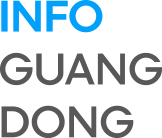Shenzhen raises housing provident fund rental withdrawal ratio to 80% from Nov. 1
As part of the city's action plan to stimulate consumption, Shenzhen will raise the proportion of housing provident fund (HPF) that eligible renters can withdraw to pay rent from the current 65% to 80% of the monthly contribution amount, effective Nov. 1.
The measure will remain in force for two years through Oct. 31, 2027.

Potential home buyers learn about housing units in a residential compound in Bao'an District. Photo from Dute News
Under the implementation plan, residents who do not own commercial or government-subsidized housing in Shenzhen, may apply to withdraw the housing provident fund for rent, with the maximum withdrawal amount equaling 80% of the monthly contribution.
Under the implementation plan, employees who do not own commercial, policy, or other indemnificatory housing in Shenzhen — including the housing status of their family members — may apply to withdraw HPF funds for rent. For each month within the policy period, the maximum withdrawal amount will equal 80% of that month’s housing fund contribution.
Employees who have unwithdrawn eligible months before November 2025 will see their total withdrawal calculated in segments.
For eligible months before Nov. 1, 2025, withdrawals will be calculated under the existing Shenzhen Housing Provident Fund Withdrawal Management Regulations, using a 65% withdrawal ratio.
For eligible months from Nov. 1, 2025 through Oct. 31, 2027, the 80% withdrawal ratio will apply. The amounts from the two periods will then be summed to determine the applicant’s total withdrawal.
Shenzhen offers up to ¥140,000 subsidy to phase out National IV medium and heavy-duty trucks
Owners of non-operational National IV medium and heavy-duty trucks will receive a subsidy of up to 140,000 yuan (US$19,712) per vehicle for scrapping and replacing their vehicles, according to an initiative jointly issued by the city’s ecological environment bureau and municipal finance bureau to accelerate the retirement and replacement of the National IV trucks.
The program applies to private-use National IV medium and heavy-duty trucks that were registered in the city before July 1, 2025. Unlicensed on-site vehicles, special-purpose work vehicles and low-speed trucks and three-wheeled vehicles are excluded from the program.
To qualify for the scrapping subsidy, eligible vehicles must be scrapped within Guangdong Province or exported between July 1, 2025 and Dec. 31, 2026. The early retirement subsidy varies by vehicle type and the timing of the scrappage. For medium-duty trucks, the payment ranges from 10,000 yuan to 25,000 yuan, while for heavy-duty trucks it ranges from 12,000 yuan to 45,000 yuan.
The replacement subsidy is available for new-energy vehicles. Medium-duty new-energy trucks are eligible for a flat subsidy of 35,000 yuan. Heavy-duty new-energy trucks are subsidized according to axle count: 70,000 yuan for two-axle vehicles, 85,000 yuan for three-axle vehicles, and 95,000 yuan for four-axle and above vehicles.
Under the policy, eligible vehicle owners may combine the early retirement subsidy with the replacement subsidy, resulting in a possible total subsidy of up to 140,000 yuan per truck.
The move is intended to speed up the removal of older, higher-emitting trucks to improve air quality and promote electrification of freight transport. Truck owners are advised to consult the municipal ecology and environment bureau or the municipal finance bureau, or the local vehicle scrapping and subsidy handling offices, for detailed application procedures, required documents and precise subsidy levels tied to vehicle model and scrapping date.
China further eases students' academic burden
The Ministry of Education (MOE) on Oct. 24 rolled out a set of 10 measures aimed at further alleviating the academic burden of primary and middle school students.
These measures encompassed a series of strict regulations, including imposing a cap on the total amount of written school assignments, cutting down the frequency of daily exams, and ensuring exam difficulty is kept at a reasonable level.
The MOE encouraged schools nationwide to designate one day each week as a "homework-free day."
The measures reiterated the country's commitment to maintaining strict oversight over subject-based training during the nine-year compulsory education period, spanning from primary to junior high school.
Simultaneously, they pledged to advance the reform of the junior high school graduation exam in a systematic manner.
Schools are required to organize at least one educational activity each month that focuses on health and safety, aimed at improving students' psychological resilience and immunity.
The MOE further mandated the full implementation of a daily two-hour sports activities initiative, urging schools and communities to make nearby sports venues accessible to students.
In addition, the measures underscored the importance of ensuring students have adequate sleeping time and develop healthy internet usage habits.
Special attention and care should be extended to vulnerable groups, such as left-behind children, orphans, and children from single-parent families, the MOE emphasized.
The MOE also highlighted the significance of fostering harmonious parent-child relationships within families.






